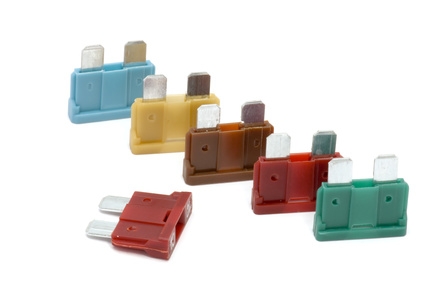
Few consumer products have been specifically engineered to fail, but DC (direct current) fuses might be the exception. A fuse contains a small wire or metal component that melts or separates if a surge in amperage attempts to pass through the circuit the fuse protects. This prevents damage to more valuable components on the circuit. The most common example of a consumer item using multiple fuses is a car or truck. The fuse panel installed in most motor vehicles contains dozens. If a fuse has blown in your vehicle, selecting and sizing the proper replacement is easy.
Locate the fuse panel in your vehicle. Your owner's manual will indicate where it is installed along with instructions about how to remove the cover. Most likely, it will be somewhere under the instrument panel.
Read the owner's manual to determine the location on the fuse panel of the fuse that has most likely failed. Strictly as an example, if your windshield wipers no longer operate, the manual might indicate that the fuse controlling that circuit is a 15 amp fuse located in position 12.
Slide the jaws of the plastic fuse puller around the top edges of the failed fuse and pull it straight out of the fuse panel. Again, strictly as an example, the 15 amp fuse in question will be blue, and the number "15" will be printed on the top. In most vehicles, the fuse will be a spade or mini-spade type.
Examine the fuse from the side, if the small wire inside has separated (fused) or the fuse is discolored, it has definitely failed and should be replaced.
Visit any auto parts retailer and acquire a new fuse of the identical physical size, color and amperage.